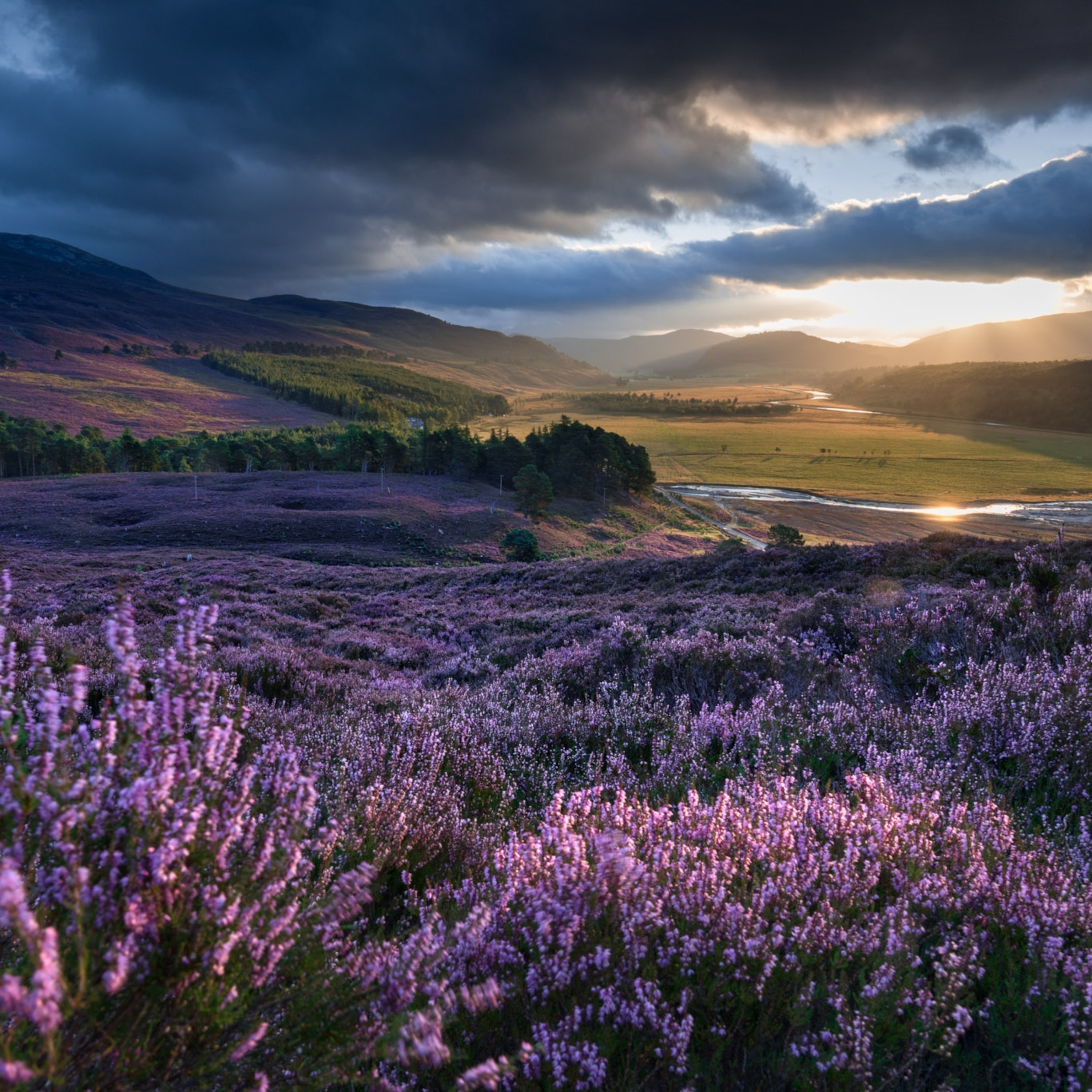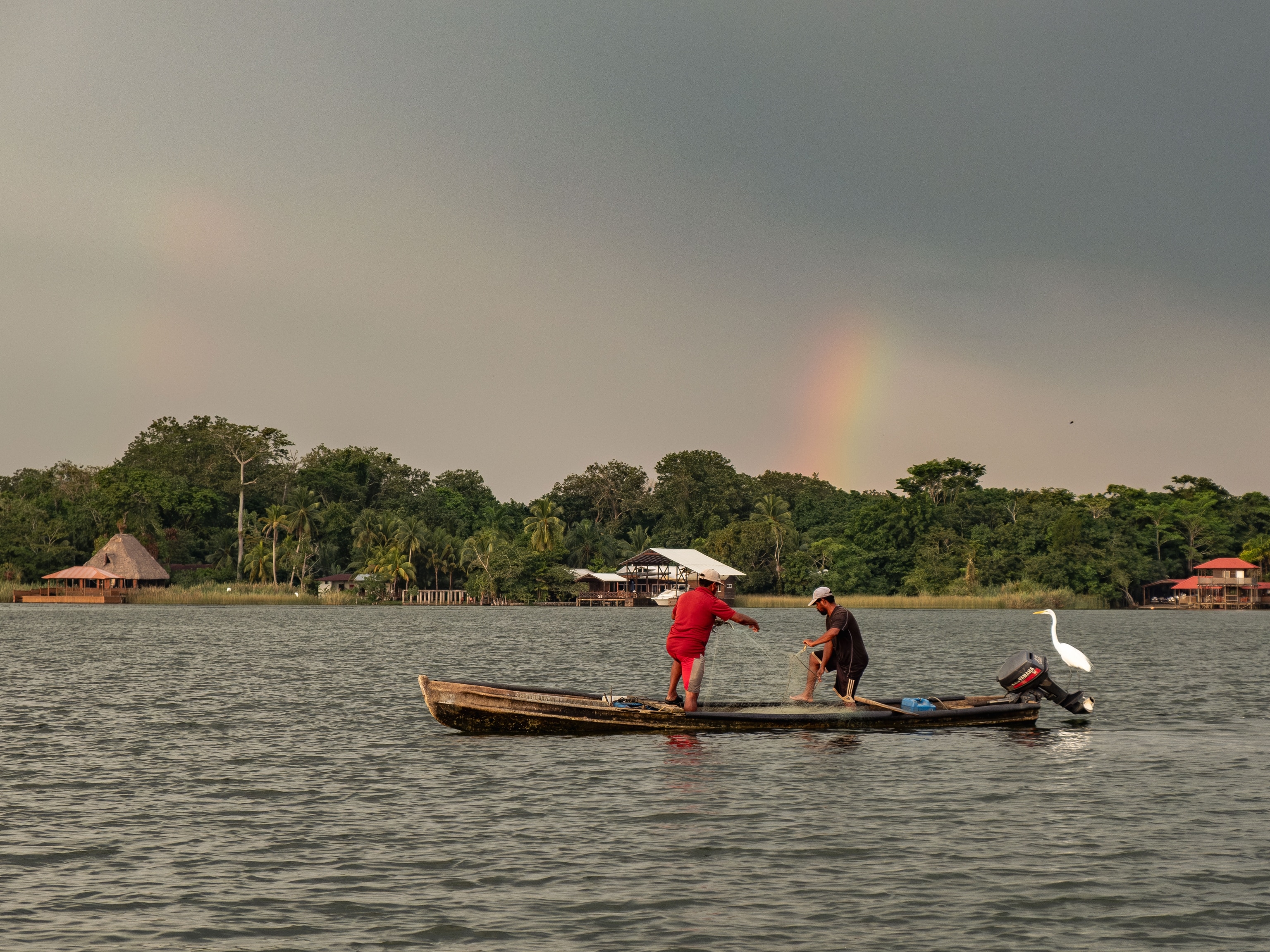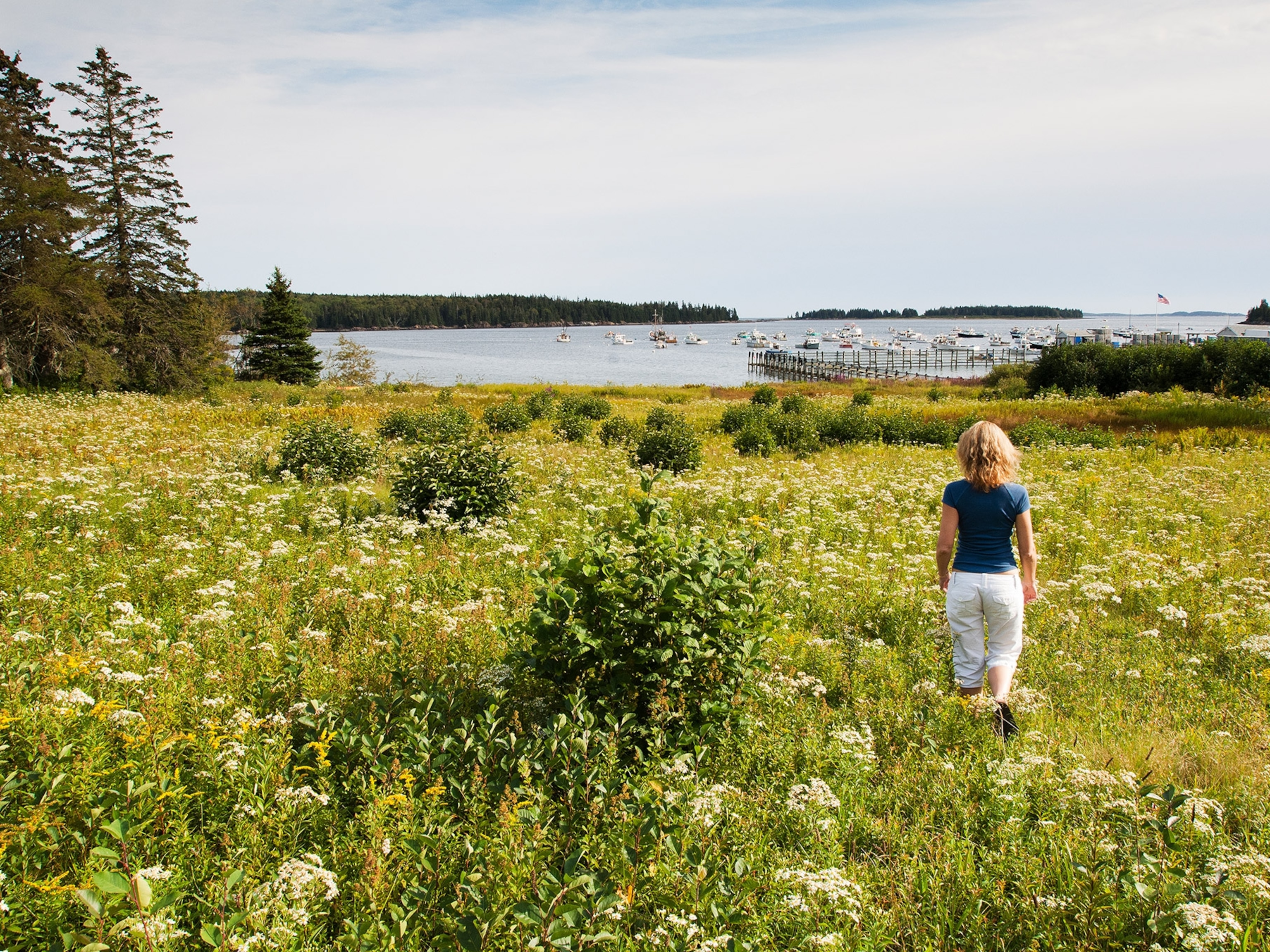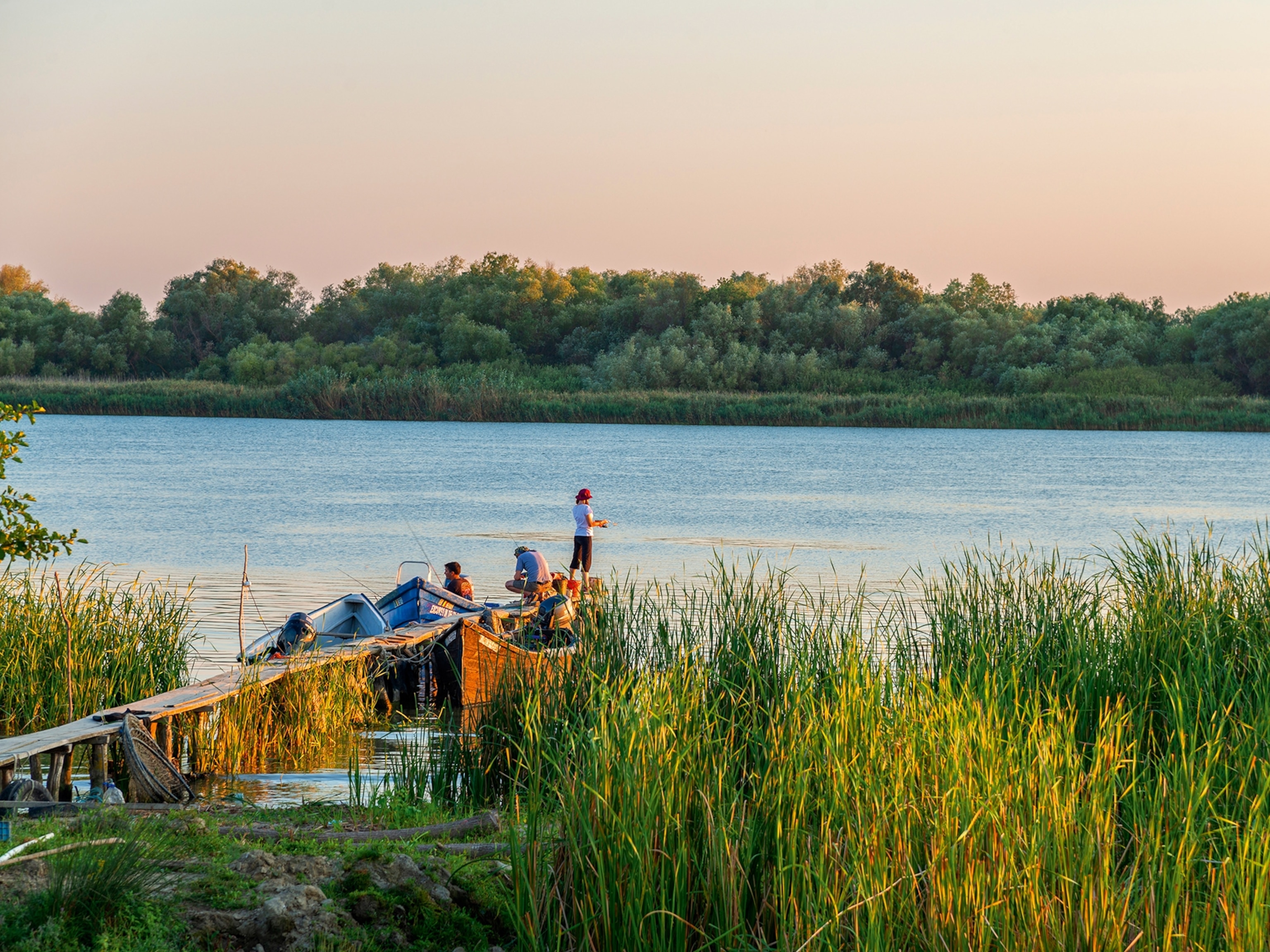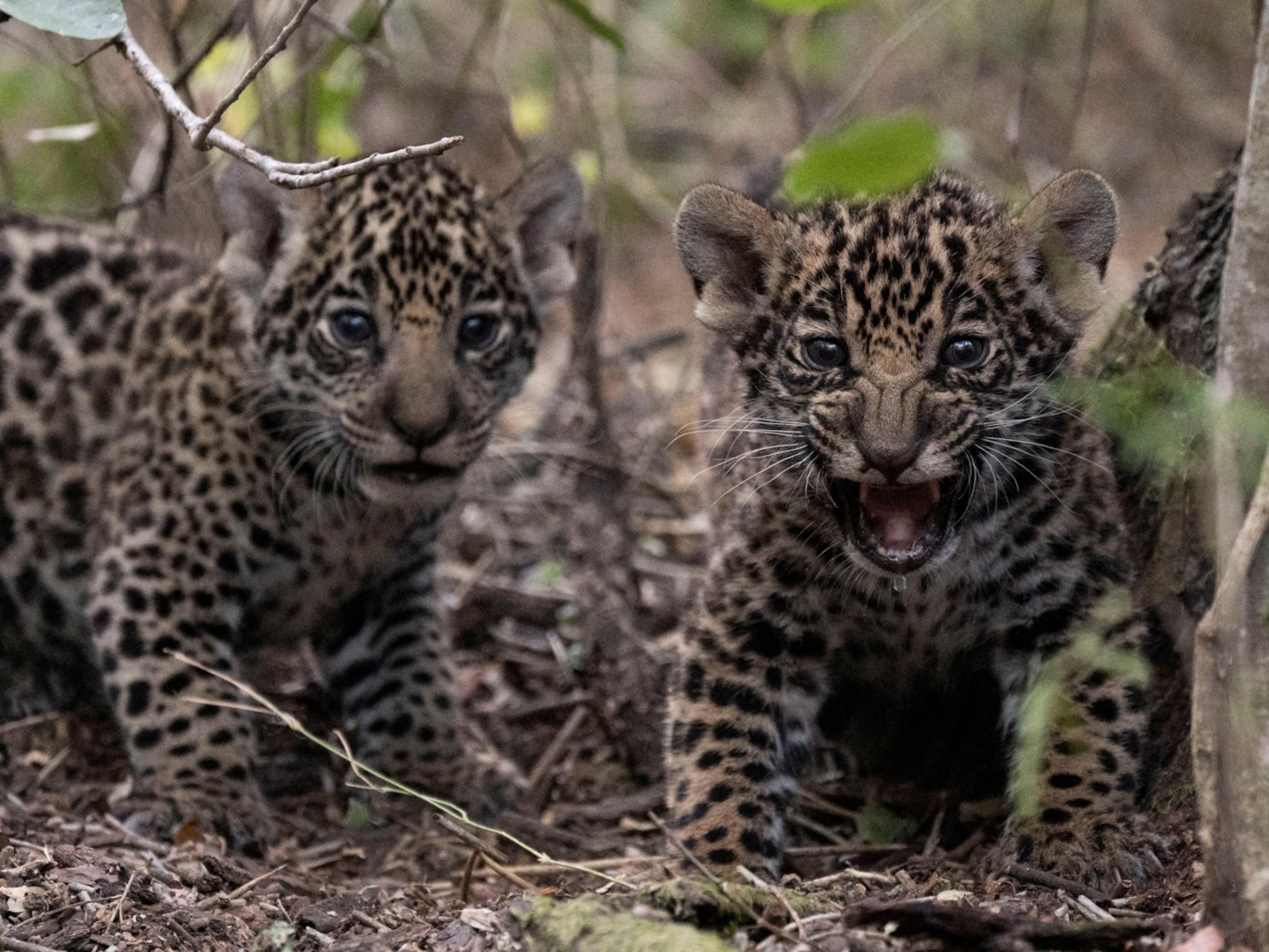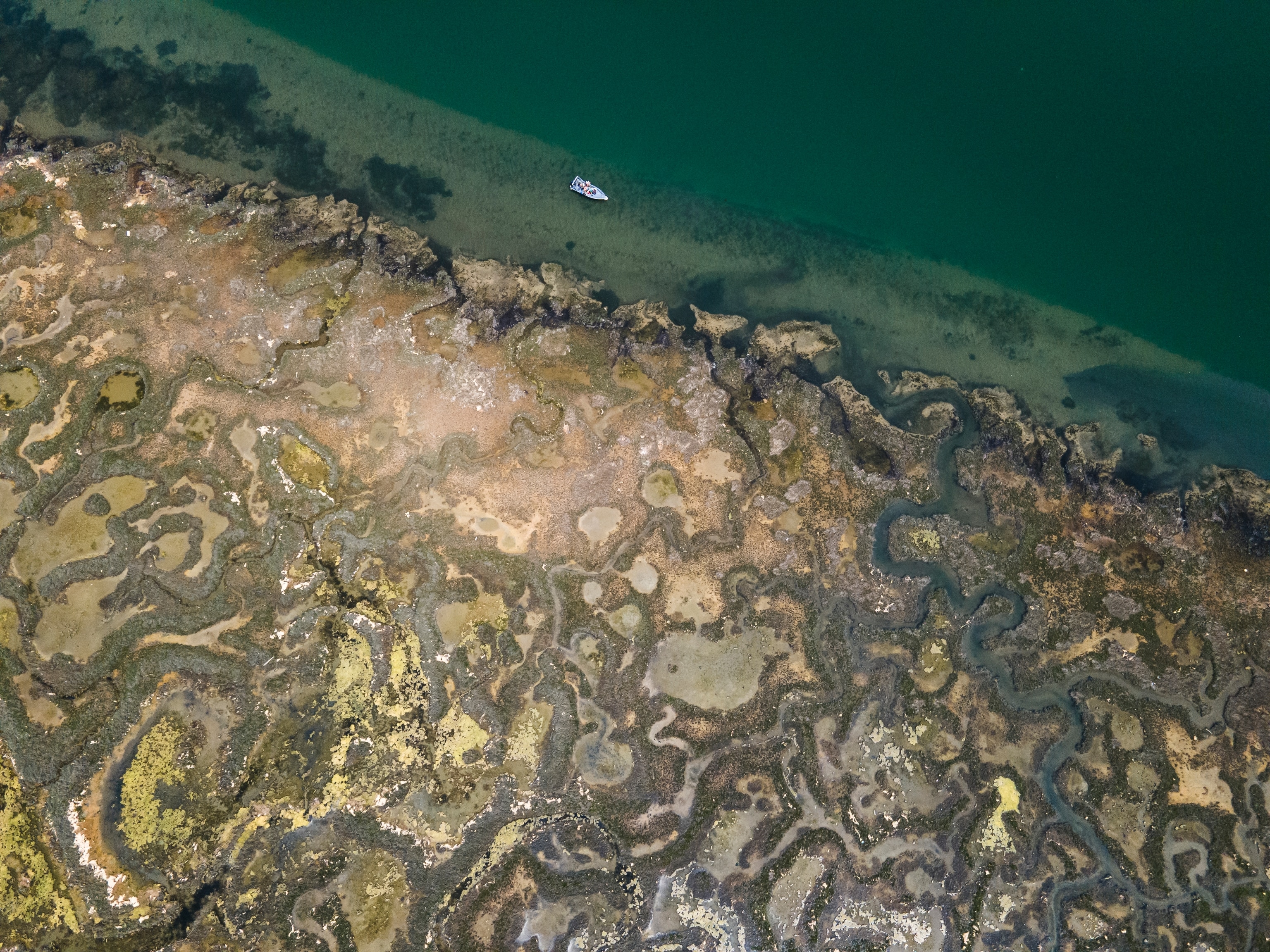
Explore the wilder side of Venice—with the help of its fishermen
Overtourism is threatening life on Burano, a bucolic island in the Venice Lagoon. Can new ecotourism efforts turn things around?
Fly into Venice in fall or spring, and you may spot huge circles and strange swirls spreading across the waters below. These are the nets of moecanti, fishermen who catch moeche, the Venice Lagoon’s softshell crabs. For centuries, they’ve staked out the crustaceans in this wilder corner of Italy’s floating city.
Few outsiders imagine Venice as bucolic. Instead, it’s synonymous with overtourism—every year, around 30 million visitors swarm into a place of under 50,000 residents. The Venetian population has shrunk by 70 percent in the past 70 years, its residents driven out by ballooning rents and cuts in services. In a bid to stem the flow, this summer Venetian authorities will begin charging day-trippers a fee of three to 10 euros.
The smaller islands of the lagoon will be exempt from the new tax, yet overtourism threatens them, too. Burano—a one-square-mile island in the north lagoon—draws thousands of visitors daily. They take a 40-minute vaporetto (waterbus) ride from Venice to see the island’s candy-colored cottages and tipsy, leaning bell tower. The tourists pack the narrow canal-side walkways and leave chaos (and trash) in their wake.
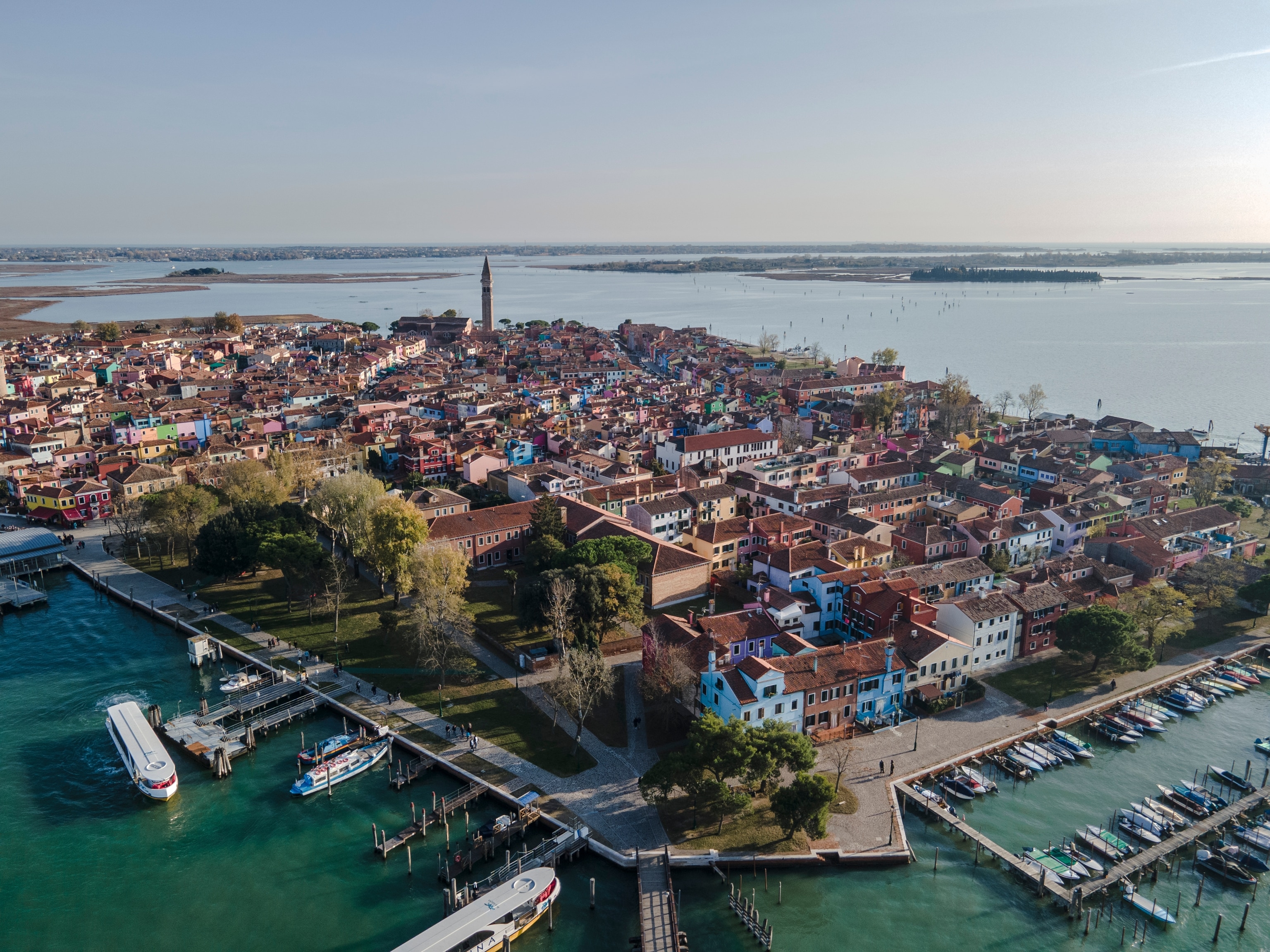

Now, some Buranelli—as residents are called—are fighting back, making the island a launching ground for ecotourism. A clutch of the island’s fishermen are doubling up on their jobs—casting their nets as well as showing tourists the fragile lagoon and why it needs preserving.
A centuries-old fishing tradition
Life on Burano has always revolved around the water. A fishing settlement since medieval times, with a history dating back to the Roman era, the island’s relative separation from Venice has kept its traditions intact.
Yet working with tourists is increasingly important for the fishermen’s livelihoods. Wholesale seafood prices nearly halved during the pandemic, and while they recovered, they plummeted again in late 2022. “Businesses bought farmed fish from other countries,” says Andrea Rossi, a fifth-generation Burano fisherman who also takes travelers out on his boat. “That’s intolerable—lagoon fish should be valued.”
(Need to complain? Here’s how medieval Venetians did it.)
Domenico Rossi (no relation to Andrea), another moecante, also brings visitors on half-day trips from Burano. He sails his bright red-and-green bragozzo (a traditional trawler boat) out into the emerald waters, showcasing both his way of life and the wildlife of the lagoon.
“I’m proud of my work but I’m also aware that in a few years there won’t be anyone left doing it,” he says. For centuries, fishermen like him have cast their nets across the lagoon twice a year: from March to June and October to December.
Domenico’s family has fished since the times of La Serenissima—the Venetian Republic (697-1797)—but the tradition stops with him. Numbers of both crabs and fishermen are sharply declining: “When I was a child there were 100 moecanti on Burano; now we are 19,” he says. Climate change has raised lagoon temperatures over the last decade, and while the crabs aren’t endangered—yet—fewer of them are swimming into fishermen’s nets.
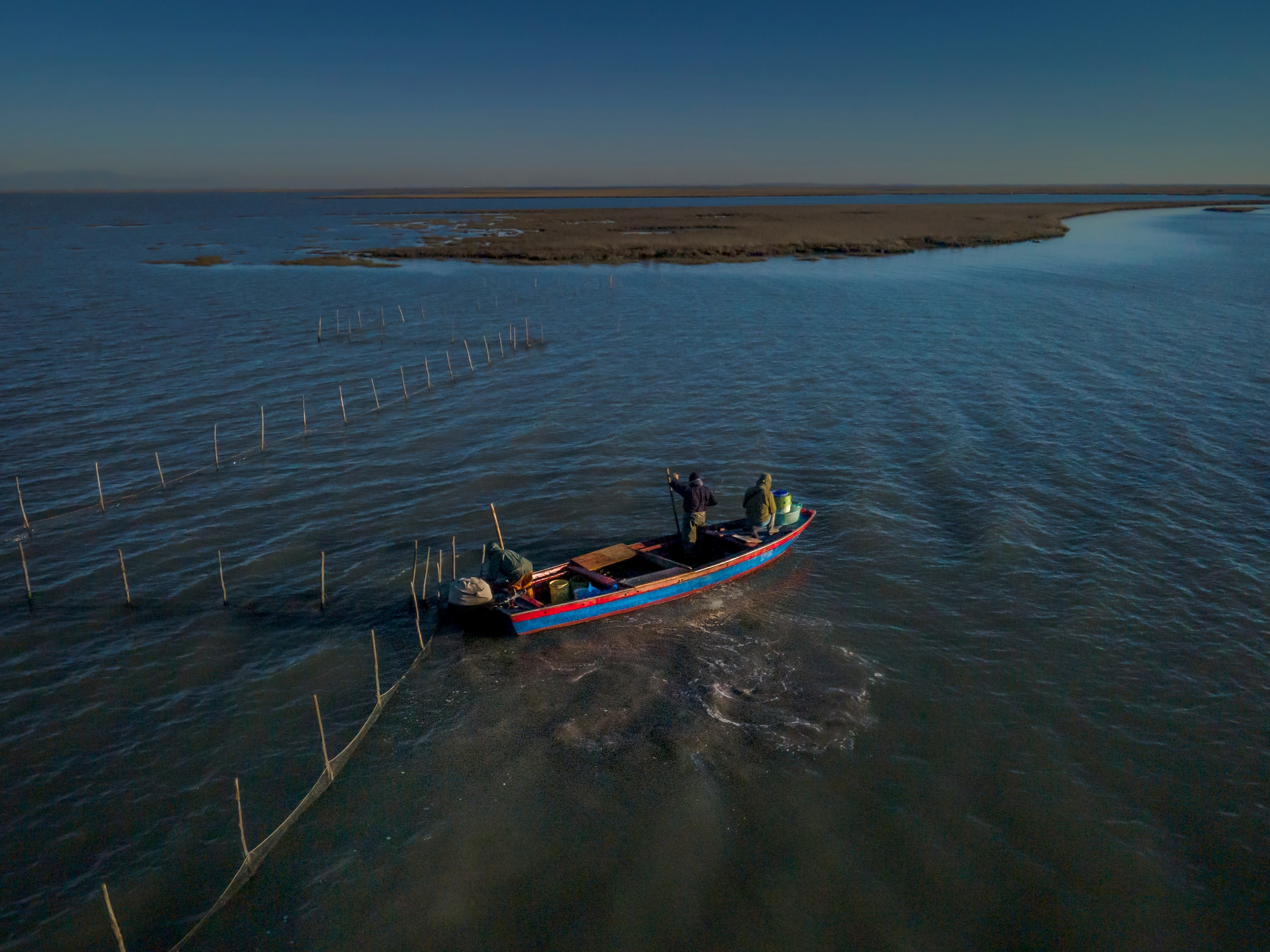

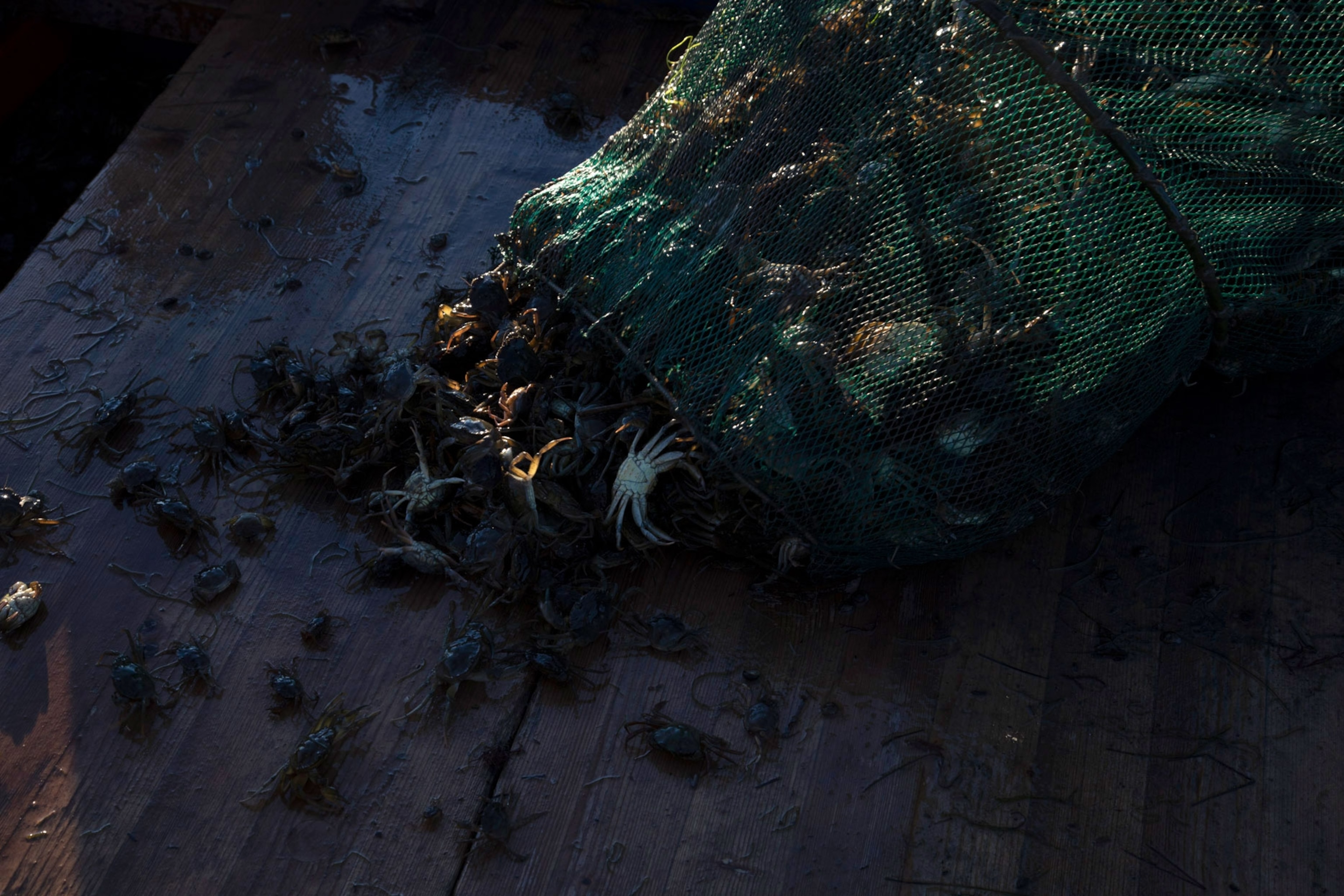
The potential loss of his traditional industry spurred him to start offering tours. “I love my work, and I want something to remain,” he says. “Nobody has ever bothered to explain or show this work.”
So Domenico meets guests at the 19th-century fishermen’s cooperative on Burano and zips them away into the lagoon, slipping through narrow channels where the water is just inches deep, and the larger tourist boats that sail day-trippers around cannot pass. If it’s crab season, passengers might see his nets, laid out in three half-mile zigzags, hand-stitched to 3,000 chestnut poles.
He then sails passengers to Torcello: the island opposite Burano, famous for its basilica filled with glittering Byzantine mosaics. This is where Venice started—in the early medieval period, as Burano developed on fishing, Torcello became a boomtown port of 20,000 inhabitants.
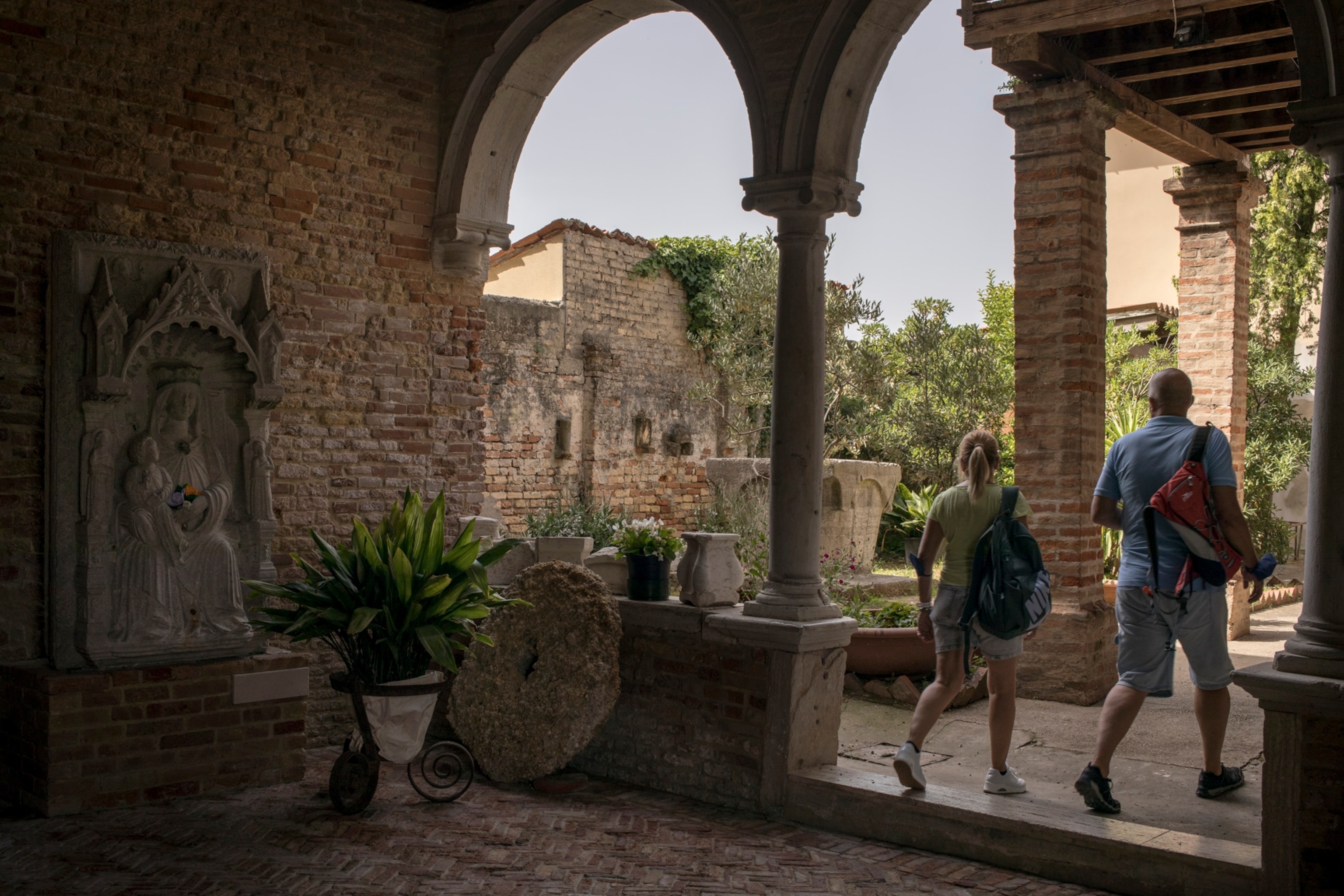
Today, only a dozen locals remain in Torcello; the fields encircling the basilica are now fallow and most other historic buildings have fallen into ruin.
Near the church is Domenico’s cabin, where he sorts the crabs that have swum into his nets. Moeche are eaten only as softshells, meaning he must throw about 90 percent of his catch back into the lagoon. The small percentage of crabs that are about to molt go into crates in the canal adjacent to his cabin, where Domenico checks on them twice a day, ready to whisk them to market as soon as they shed their outer shells.
“Burano is a happy island,” he says. “We have an invasion of tourists, but they do bring work. I’m only against a certain type of tourism. Coming here for 30 minutes doesn’t make any sense.”
Andrea Rossi agrees. “We need a better kind of tourism,” he says. “Not people coming en masse to buy souvenirs and destroy the island. We’re a very small, very particular place. We paint our houses different colors, roast fish outside our homes, and we fish in the lagoon. I’m proud, but I’m also afraid this will disappear.”
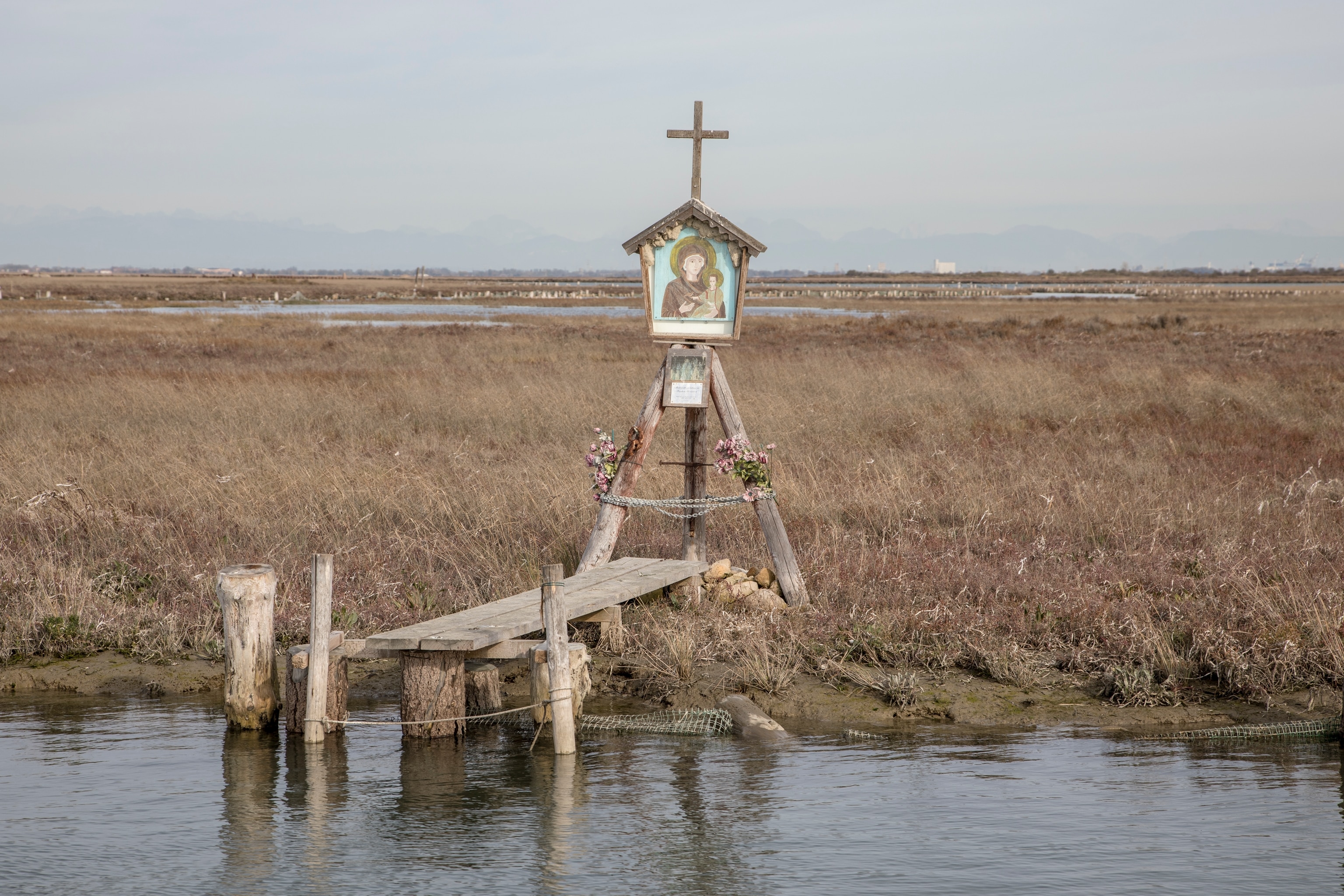
Andrea supplies seafood for some of Venice’s top restaurants and has now branched out into ecotourism. Along with his fishing partner Michele Vitturi, he takes visitors birdwatching on Torcello and on sailing trips into the wild north lagoon.
“I want to allow tourists to discover what’s behind the famous sights,” he says. “They come to Venice but they don’t see the lagoon. I show them the tranquillity, the plants, the wildlife—the peace beyond the chaos.”
‘Another Venice’
It is, says Andrea, as he and Vitturi sail their little fishing boat due north from Burano, “another lagoon, another Venice.” The boat slips past islands abandoned centuries ago and alongside barene—the mudflats which form the backbone of the lagoon. A pair of sickle-beaked ibises swoops overhead, as a kestrel darts towards Torcello. Further north, flamingos stalk through the shallow, grey-green water.
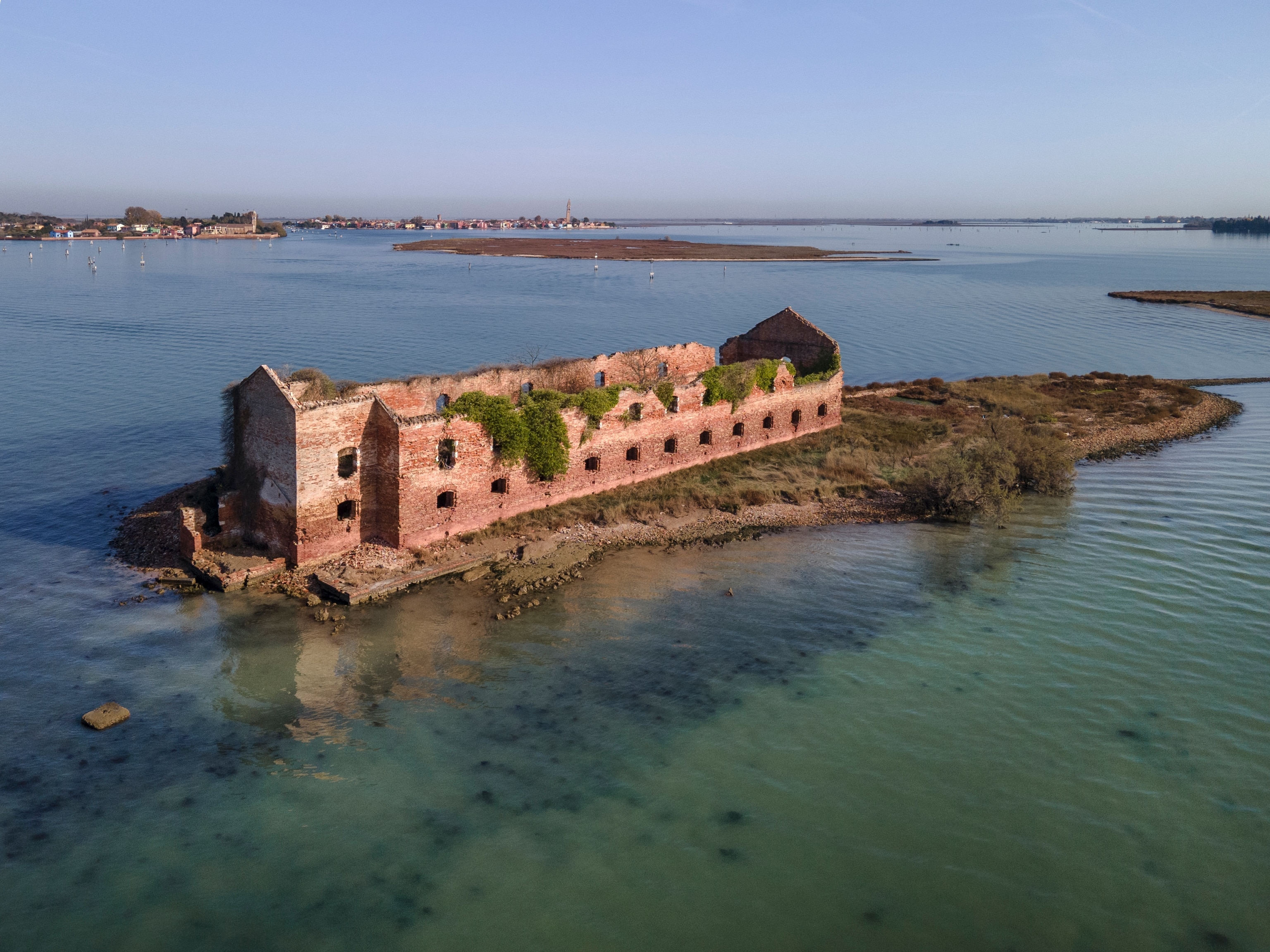
On the trip back to Burano, Vitturi cuts the engine and paddles towards bushy plants—samphire and santonico, a kind of lagoon absinthe—snipping off the tips for passengers to sniff. Some days, he harvests cuttings to sell to Venice restaurants along with their crabs.
Among the restaurants the duo supplies is Michelin-starred Venissa on the island of Mazzorbo, which connects to Burano via a pedestrian bridge. Venissa has an onsite vineyard and an organic vegetable garden tended to by island retirees.
Their moeche also show up on the menu at Burano’s Trattoria al Gatto Nero, beloved by Hollywood A-listers and residents. For six decades, the Bovo family that owns it has been buying direct from Buranelli fishermen.
“We try to keep it as traditional as possible,” says maître d’ Massimiliano Bovo. “We like giving clients traditional fish, traditional people, in a real Burano atmosphere.” The menu stars lagoon specialities: goby fish risotto, seared scallops and razor clams, and (in season) moeche, fried and eaten whole, the better to show off their salty-sweet taste.
“The lagoon must be defended at all costs—we have to make the effort to preserve it now,” says Massimiliano. Luckily, the fishermen are on the case.
Marco Zorzanello is an Italian documentary photographer born in Venice. Follow him on Instagram.

